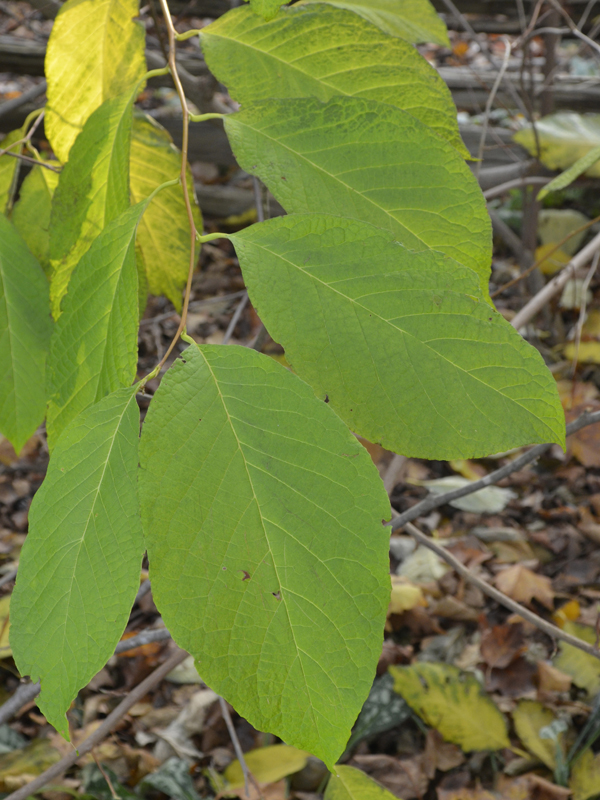
Woody > Dirca > Dirca palustris > Dirca palustris
Dirca palustris
Eastern Leatherwood
Origin: Native to the eastern half of North America.
| Family |
| Thymelaeaceae |
| Genus |
| Dirca |
| Species |
| palustris |
| Category |
| Woody |
| Type |
| Shrub (deciduous) |
| USDA Hardiness Zone |
| 3 - 9 |
| Canadian Hardiness Zone |
| 1a - Requires cool season protection under glass. |
| RHS Hardiness Zone |
| H3 - H7 |
| Temperature (°C) |
| -40 - (-1) |
| Temperature (°F) |
| -40 - 30 |
| Height |
| 1 - 2 m |
| Spread |
| 1 - 2 m |
Photographs
Description and Growing Information
Flowering Period
| General Description |
| A small deciduous shrub with yellow flowers and leaves that emerge yellow, mature to green, and then fade back to a bright yellow in autumn. |
| Landscape |
| Excellent addition to a woodland garden, or for a pond margin. |
| Cultivation |
| Grow in partial or full shade in a rich, moist soil that is never allowed to dry out. Full sun may damage the leaves and is likely to ruin the autumn colouring. |
| Growth |
| Slow |
| Pests |
| No serious insect or disease problems. |
| Habitat |
| Forest understory. |
| Bark/Stem Description |
| Leathery bark with pliable twigs, occasionally causing allergic reactions. |
| Leaf Description |
| Leaves grow to approximately 10 cm long, emerging yellow, maturing to green, and then turning to a bright yellow in autumn. |
| Flower Description |
| Flowers are bell-shaped, less than 1 cm in length, and are a bright yellow, appearing in clusters in early spring before the foliage emerges. |
| Fruit Description |
| Fruit is a green drupe, 1.3 cm in diameter. |
| Notable Specimens |
| Clark Wright Conservation Area, Caradoc Township, Ontario, Canada. The A.M. Cuddy Gardnes, Strathroy, Ontario, Canada. |
| Ethnobotanical Uses (Disclaimer) |
| The bark can be woven into a rope while young shoots may be woven into baskets. Bark, fruit and roots are toxic. |
